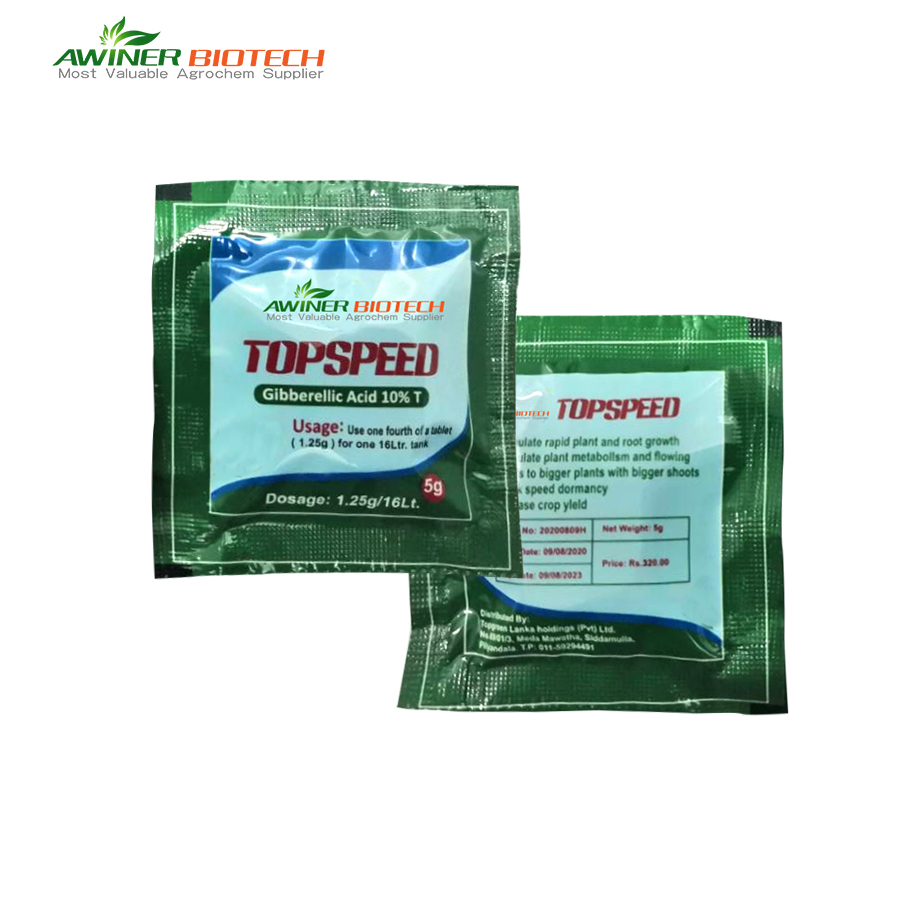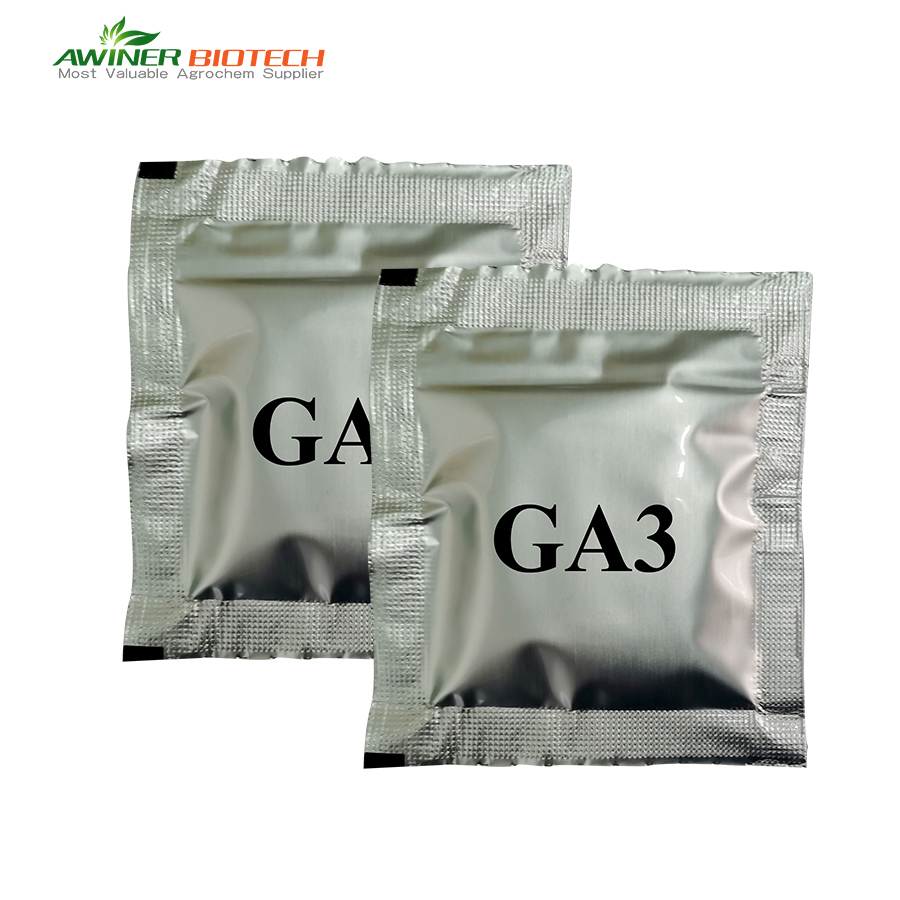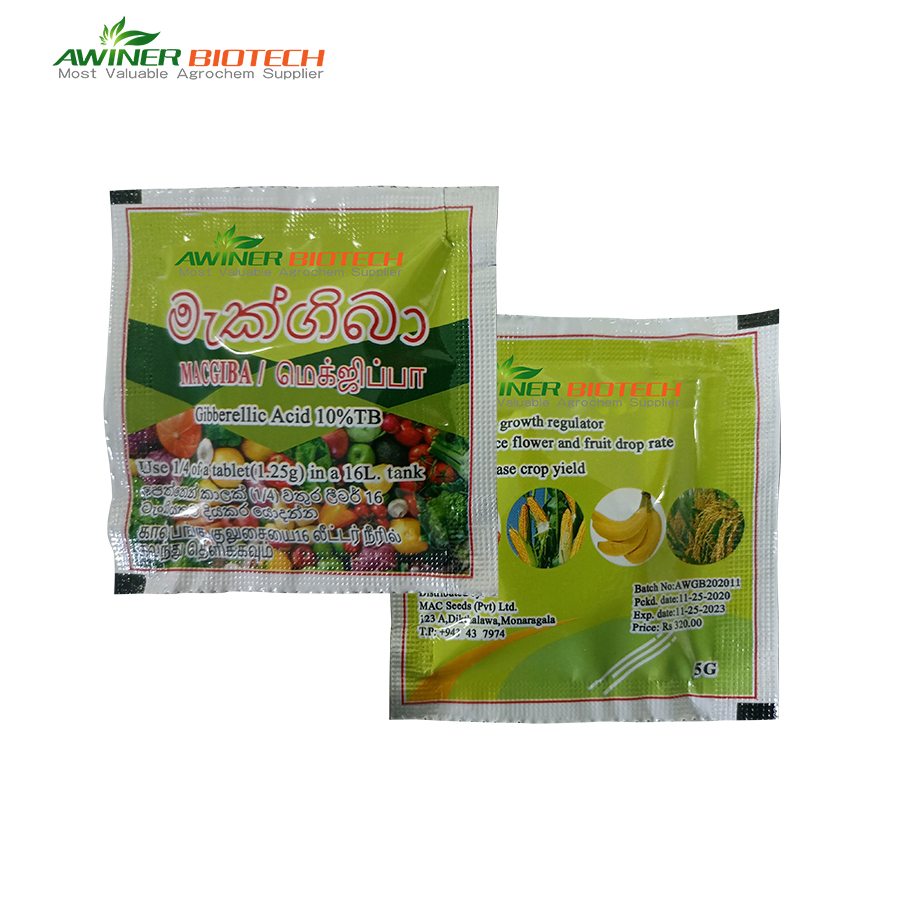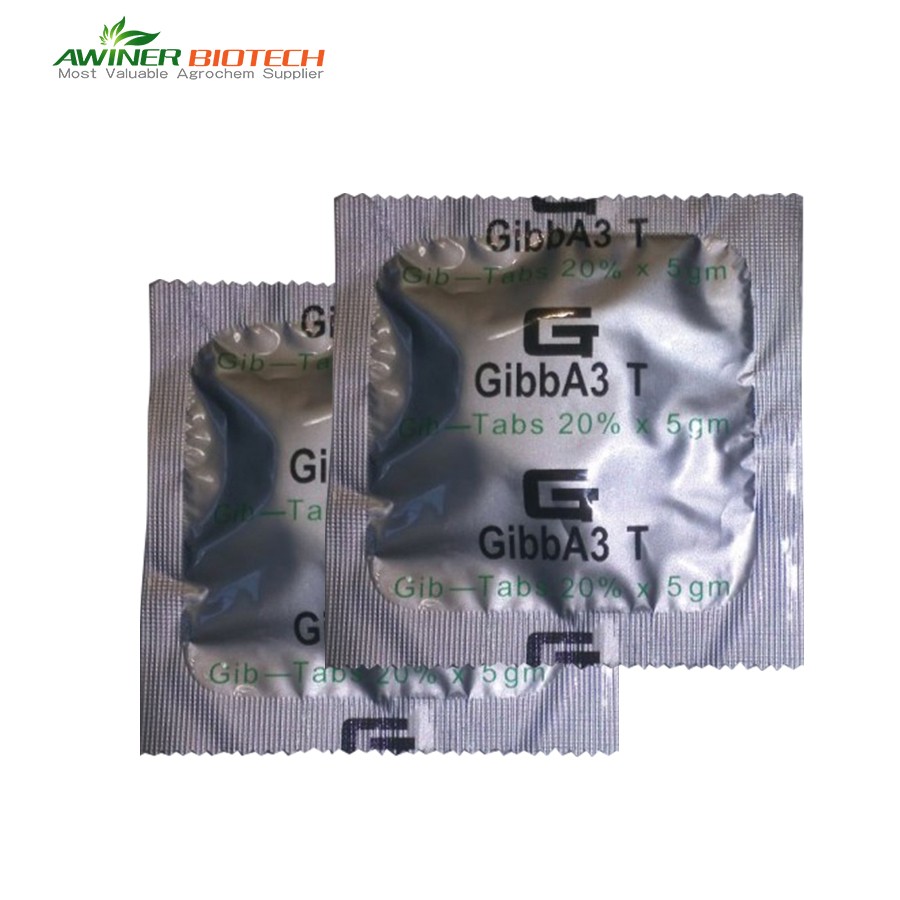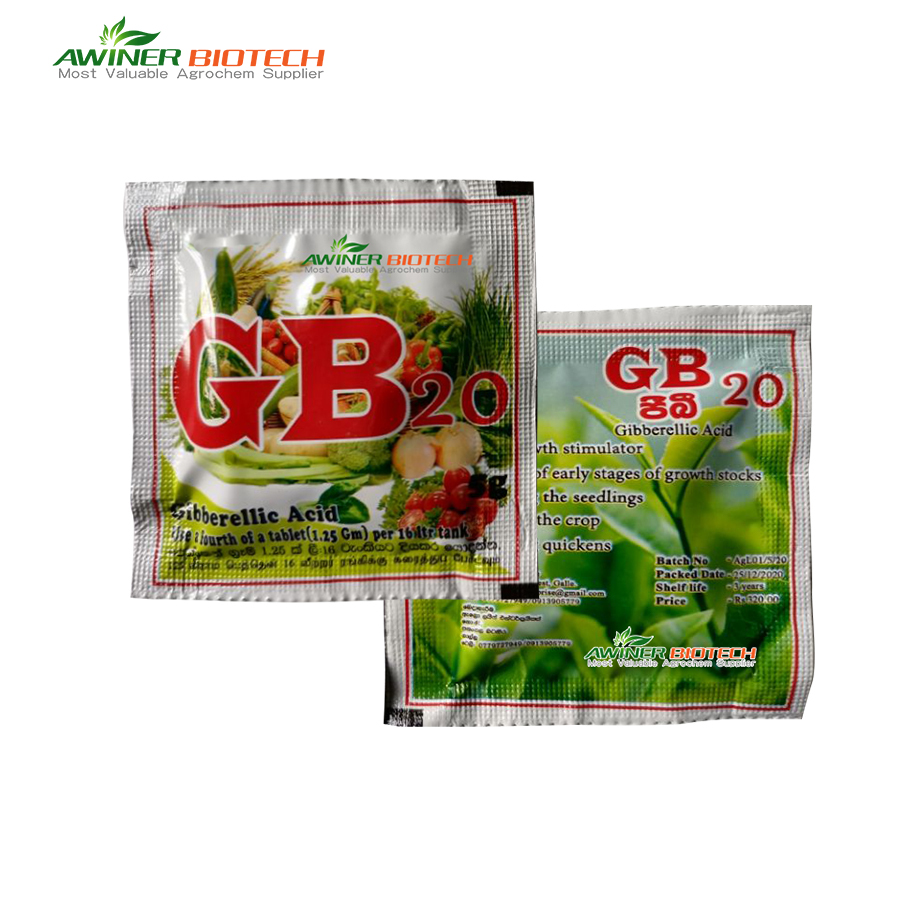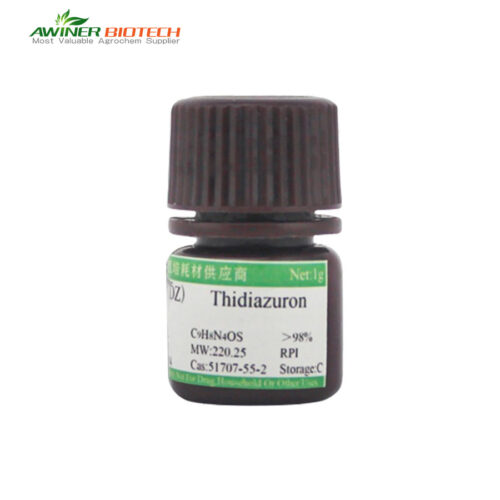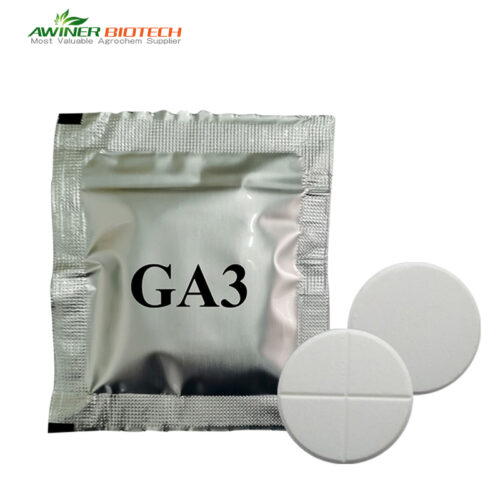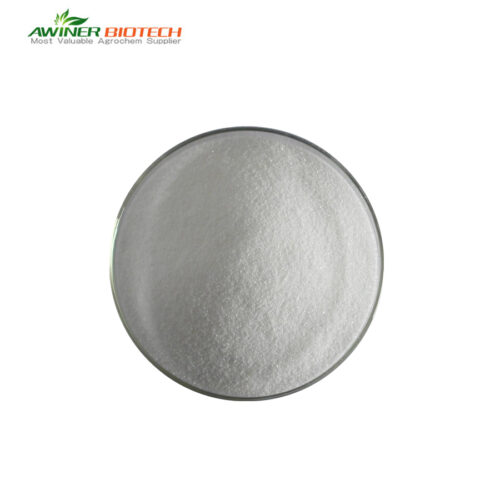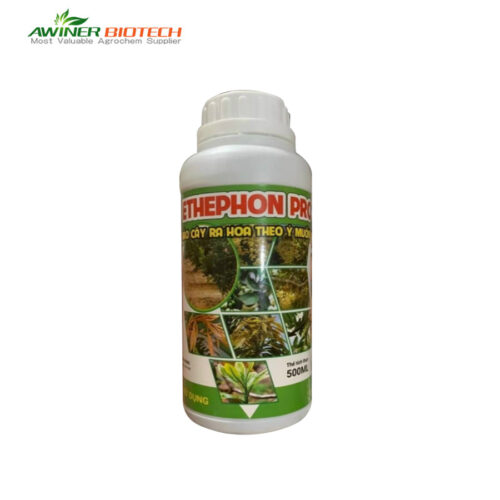Gibberellic acid |
|
| Dosage form | 10%SP,20%SP |
| Packing | Liquid:50ml、100ml、250ml、500ml、1L、5L、10L、20L Solid:10g、50g、100g、250g、500g、1kg、5kg、10kg、25kg |
| Crops | Fruit tree – Growth regulation |
| Certification | SGS、 ISO 、BV |
| Formulation/Label | Customized |
| Sample | Yes |
| Delivery time | 20-30 days |
| Mixture products | 24-Epibrassinolide 28-Homobrassinolide 6BA (6-Benzylaminopurine) |
| Payment terms |  |
Gibberellic acid, derived from fungi, serves as a potent plant growth regulator. Its application can influence various aspects of plant physiology, contributing to enhanced growth and development.
The application method of gibberellic acid (GA3) varies depending on the crop type and the desired effect.
Gibberellic acid-Here are some common usage methods for different crops:
1. Grapes
- Purpose: Increase fruit size, promote uniform growth, and reduce seed formation (for seedless varieties).
- Method: Apply a solution of 30-50 ppm gibberellic acid 7-10 days after flowering, then again during the fruit enlargement stage at the same concentration.
- Note: Ensure even spraying to cover all fruits.
2. Citrus Fruits
- Purpose: Increase fruit size, delay aging, and prevent fruit drop.
- Method: Spray a solution of 10-20 ppm GA3 when the fruit starts to change color, or 15-20 days after flowering.
- Note: Avoid excessive use, as it may affect fruit quality.
3. Rice
- Purpose: Promote seedling growth and increase lodging resistance.
- Method: Mix GA3 at 20-40 ppm in water for seed soaking or spray on seedlings.
- Note: Apply during the seedling stage to avoid excessive elongation of plants.
4. Barley (for Malting)
- Purpose: Promote germination and accelerate the malting process.
- Method: Treat seeds or sprouting seeds with 2-5 ppm GA3 solution at the beginning of germination.
- Note: Maintain appropriate temperature and humidity for effective germination.
5. Vegetables (e.g., Lettuce, Celery)
- Purpose: Promote seed germination and stimulate stem and leaf growth.
- Method: Spray a solution of 10-50 ppm GA3 on leaves or seeds, particularly during germination or transplanting.
- Note: Avoid high concentrations to prevent excessive elongation.
6. Sugarcane
- Purpose: Promote stem elongation and increase sugar content.
- Method: Spray 20-40 ppm GA3 solution on sugarcane plants during the seedling or mid-growth stage.
- Note: Combine with proper water and nutrient management for optimal yield.
7. Flowering Plants
- Purpose: Promote flowering, enhance stem elongation, and improve ornamental quality.
- Method: Spray 5-30 ppm GA3 solution on leaves or buds before the flowering stage.
- Note: Adjust concentration and frequency based on the specific growth characteristics of the flower.
<About Awiner Biotech>

Awiner Biotech offers a range of certificates, including SGS, IBO, ICAMA, and more, to help customers stay competitive in the market. We also assist clients with pesticide registration.
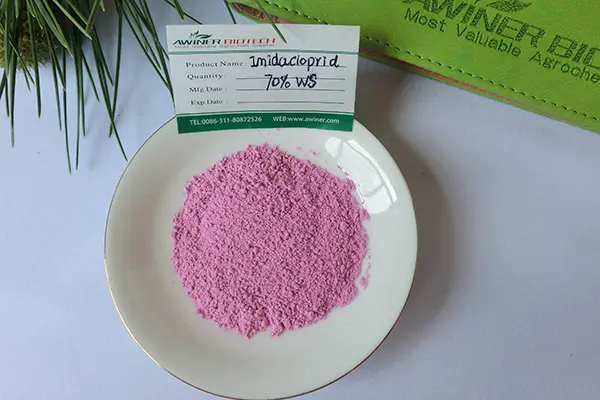
Have strong expertise in pesticide formulation, supported by advanced machinery. We offer a wide range of formulations, including WDG, WP, SP, SC, SL, EC, WS, and FS.
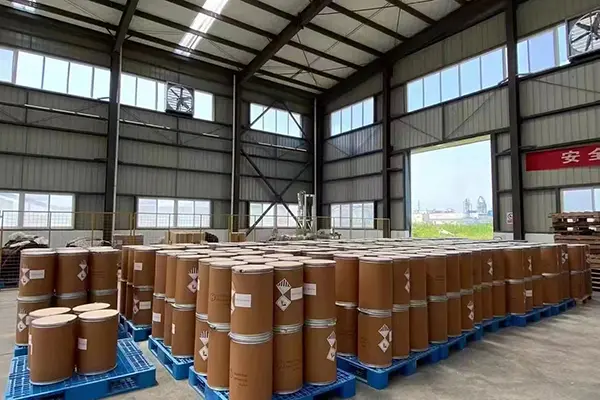
Awiner Biotech has a skilled design team that offers custom packaging and adds customer logos. We help clients establish their own brands and expand into local markets.

Providing samples is a key part of our service. Typically, we can prepare samples within 3 days, and our team will send them to customers promptly based on the schedule.

Our high-quality service shines at every stage of the sales process, especially in after-sales support. This ensures that every transaction with our customers is smooth and successful.

In addition to supplying quality products, we assist customers in growing their local markets. Our professional sales team offers expert and personalized guidance to ensure success.

